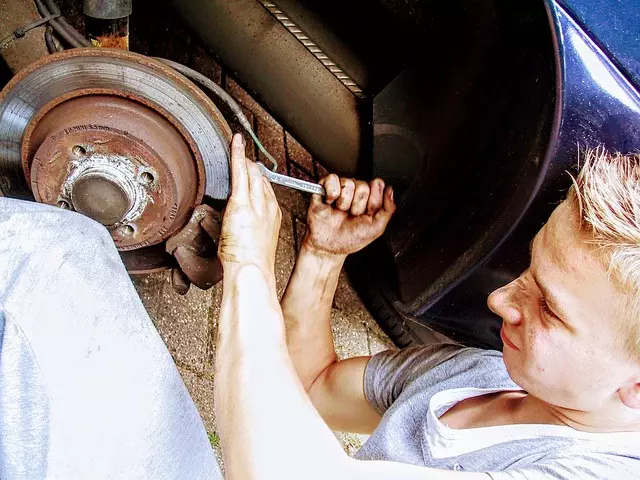Concrete foundation leaks pose a significant problem for homeowners, leading to structural damage and costly repairs. Caused by cracks or weaknesses due to various factors, these leaks allow water intrusion, causing mold growth, structural compromise, and door/window warping. Identifying weak spots through visual examinations and moisture meter readings is crucial. Residential Foundation Repair involves two main approaches: structural improvements (e.g., reinforcing with steel bars) and waterproofing solutions (e.g., membrane applications, crack sealing). Homeowners can choose between temporary fixes like epoxy sealing or hydraulic cement, and permanent methods such as underpinning or replacing damaged sections for extensive issues. The choice of materials and techniques varies by damage size, from manual preparation to specialized equipment and structural injections. Regular maintenance, including inspection, proper drainage, and waterproofing membranes, prevents future leaks.
Concrete foundation leaks are a common concern for homeowners, leading to costly damage and structural issues. Understanding the causes, such as cracks, settlement, or poor drainage, is crucial for effective repair. This article guides you through the process of identifying leaks, from visual signs to moisture meter readings, and offers insights into various repair methods, including waterproofing solutions. Learn about temporary vs. permanent fixes, essential materials, and preventive measures to ensure your residential foundation’s longevity and avoid future leaks.
Understanding Concrete Foundation Leaks: Common Causes and Entry Points

Concrete foundation leaks are a common issue for many homeowners, often leading to structural damage and costly repairs. Understanding the root causes is the first step in addressing this problem effectively. Leaks typically occur due to cracks or failures in the concrete itself, which can be caused by various factors such as settlement, shifting soil, poor original construction, or aging. These cracks create entry points for water, allowing moisture to seep into the foundation walls and beneath the slab.
The most common areas where leaks originate include joint seams, crack intersections, and any gaps around pipes, wires, or other penetrations in the foundation. Over time, these weak spots can allow water to accumulate, leading to a host of problems like mold growth, reduced structural integrity, and even warping of doors and windows. Residential foundation repair often involves identifying these specific entry points and implementing solutions to seal them tightly, preventing further leakage and ensuring the longevity of the structure.
Identifying Leakage: Visual Signs and Moisture Meter Reading

Identifying concrete foundation leaks is crucial for effective residential foundation repair. One of the most obvious visual signs is cracks in the foundation walls or floor. These cracks can range from hairline fissures to larger breaks and may indicate underlying structural damage caused by water intrusion. Other visible indicators include bulging or bowing walls, uneven floors, or doors that stick when opened or closed.
Beyond visual inspections, a moisture meter can be invaluable for pinpointing the source of leakage. These tools measure humidity levels and can detect areas with excessive moisture, often highlighting problem spots before they become apparent to the naked eye. By combining these methods—visual examinations and moisture meter readings—homeowners and professionals alike can effectively navigate residential foundation repair processes, ensuring lasting solutions for any leaks found.
Repair Methods: From Structural Improvements to Waterproofing Solutions

When it comes to repairing concrete foundation leaks in residential properties, several effective methods exist, each addressing specific issues. Structural improvements involve reinforcing the foundation with additional steel bars or replacing damaged concrete to enhance stability and prevent further leakage. This is crucial for cases where the leak has caused structural damage or weakened the foundation.
Waterproofing solutions, on the other hand, are designed to stop water intrusion at its source. Applying a waterproof membrane or coating to the exterior of the foundation walls or using specialized injection methods to seal cracks and crevices can effectively prevent future leaks. Residential Foundation Repair experts often recommend waterproofing as a long-term solution, ensuring homes remain dry and structurally sound for years to come.
Temporary vs Permanent Fix: When to Choose Each Approach

When addressing concrete foundation leaks in residential properties, a crucial decision involves choosing between temporary and permanent repair methods. Temporary fixes are quick solutions, ideal for immediate relief from water intrusion. These might include sealing with epoxy or using hydraulic cement to plug leaks temporarily. They are suitable for situations where further assessment is needed or if the leak isn’t causing severe structural damage. However, they offer only a short-term solution and may require repeated applications over time.
On the other hand, permanent foundation repair methods tackle the root cause of the leak, ensuring long-lasting results. Techniques like underpinning, piecing, or replacing damaged sections with new concrete are more intricate but provide structural integrity. These approaches are recommended when leaks are extensive, recurring, or indicative of significant foundation issues. Permanent repairs are an investment in the property’s longevity, preventing further damage and costly future fixes, making them a preferred choice for serious residential foundation repair cases.
Materials and Techniques for Effective Concrete Patching and Repair

When it comes to repairing concrete foundation leaks, the right materials and techniques are essential for effective patching. A typical toolkit includes a variety of options tailored to different repair needs. For small cracks and holes, hydraulic cement or a ready-mixed mortar composed of cement, sand, and water can be used. These quick-drying compounds fill gaps and seal leaks, offering both strength and longevity. For larger repairs, a more robust solution like fiber-reinforced concrete or epoxy injections might be necessary. These advanced materials not only patch but also reinforce the existing structure, addressing potential structural weaknesses.
Techniques employed in residential foundation repair vary based on the extent of damage. Hand tools like chisels and hammers are useful for preparing the affected area by removing loose debris and creating a clean surface. After inspection, professionals may use specialized equipment such as air compressors to blow out dust or water from hard-to-reach areas. For larger repairs, a process called structural injection involves pumping a high-performance polymeric compound into the leak, expanding and hardening to fill voids and prevent further seepage. This method is not only efficient but also environmentally friendly, ensuring the longevity of your concrete foundation.
Preventive Measures: Maintaining Your Home's Foundation to Avoid Future Leaks

Regular maintenance is key to preventing concrete foundation leaks in residential properties. Homeowners should inspect their foundations regularly for any signs of cracks, seepage, or moisture buildup. Promptly addressing minor issues can prevent them from escalating into costly repairs. Maintaining proper drainage around the house is also crucial; ensure downspouts direct water away from the foundation and that landscaping doesn’t block these channels.
Additionally, keeping the area around the foundation clear of debris and vegetation allows for easy inspection and promotes proper air circulation, which helps to regulate moisture levels. Using waterproof membranes and sealing cracks with high-quality epoxy injections can provide an extra layer of protection. Regular residential foundation repair checks and proactive measures will significantly reduce the risk of future leaks.
